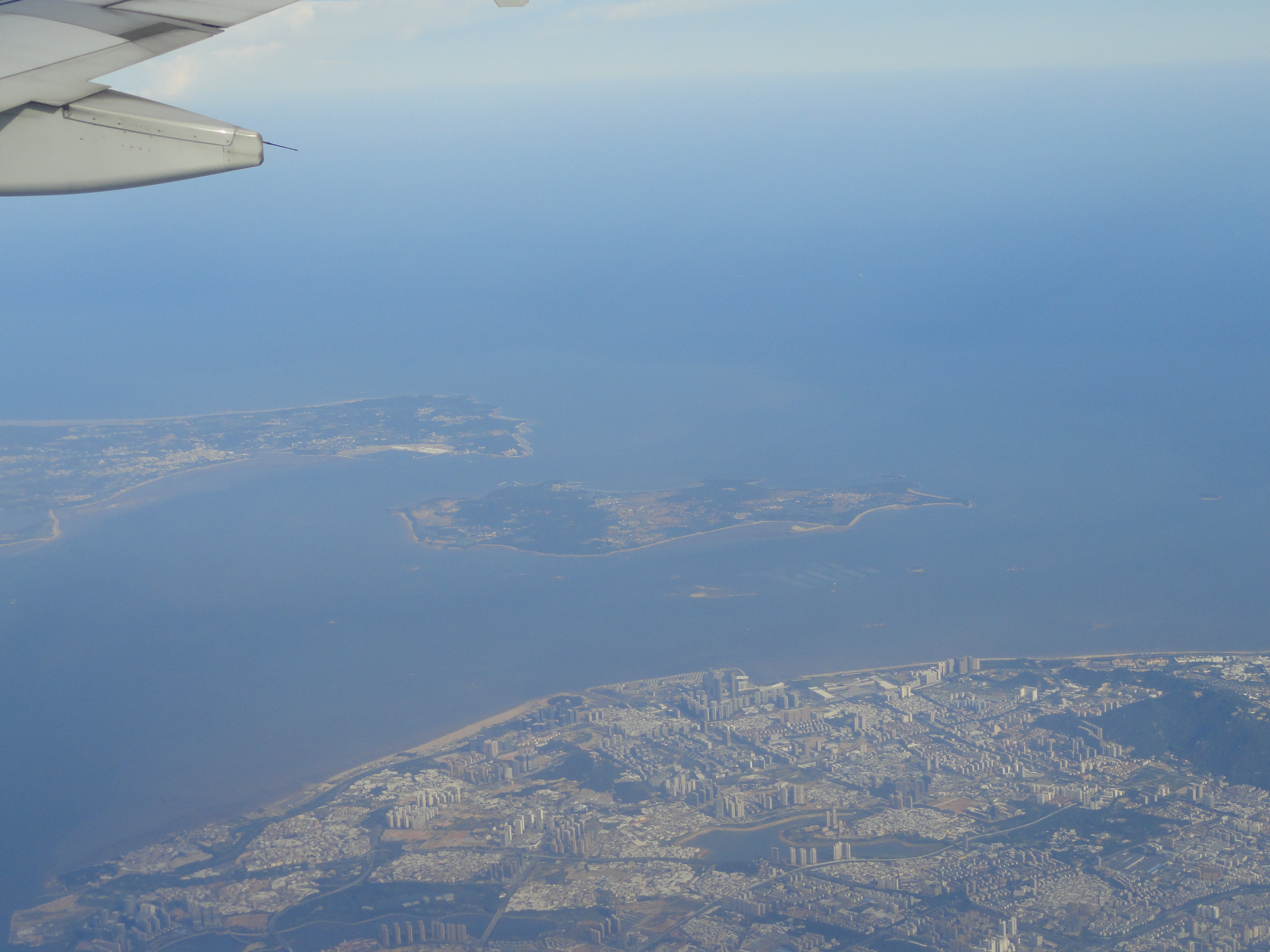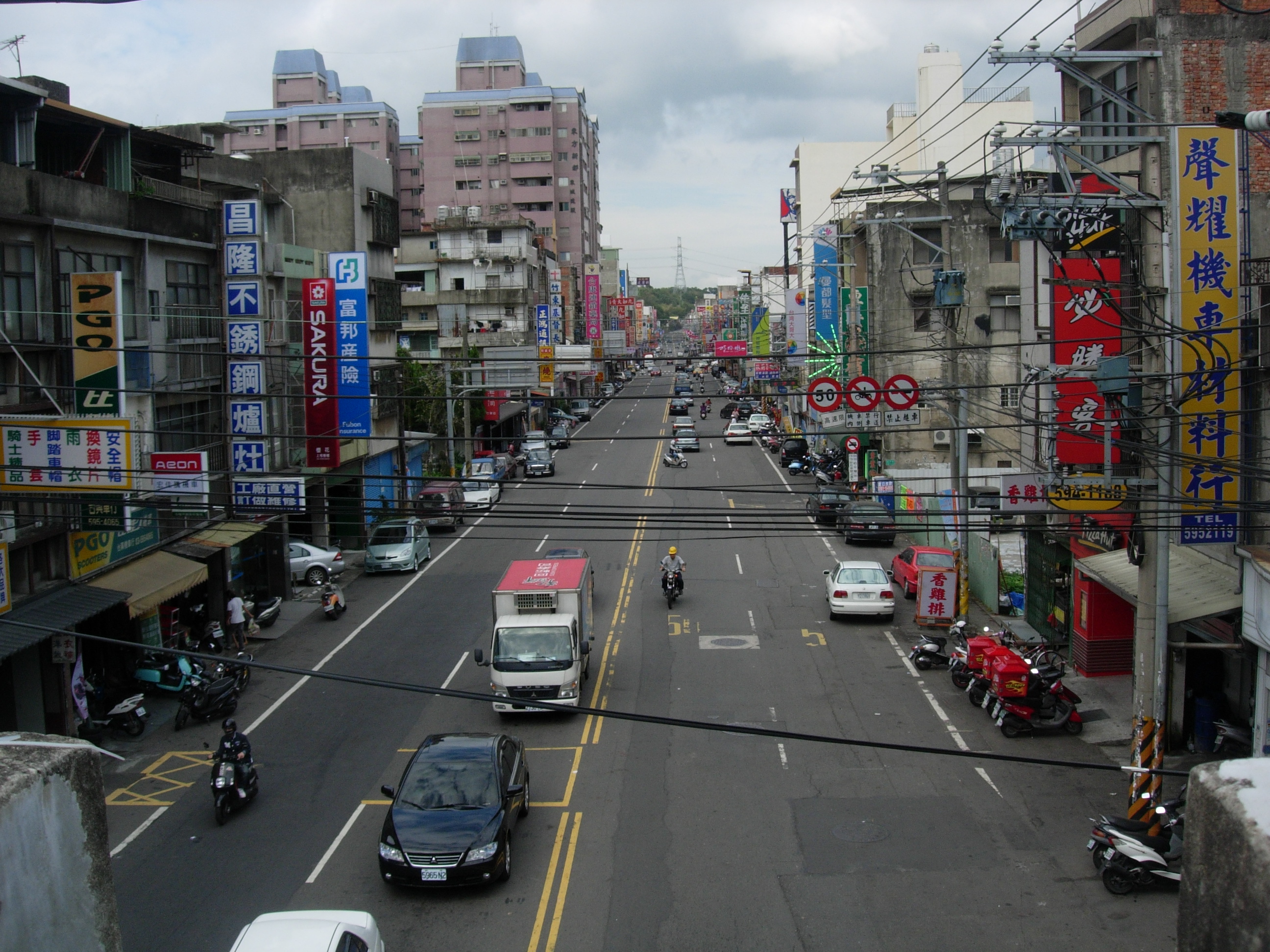|
Lieyu, Kinmen
Lieyu Township (Liehyu) (; pinyin: ''Lièyǔ Xiāng''; Hokkien POJ: ''Lia̍t-sū-hiong'') is a rural township in Kinmen County (Quemoy), Fujian Province, Republic of China (Taiwan). It mainly consists of Lesser Kinmen (; Pīnyīn: ''Xiǎojīnmén''), Dadan, and Erdan, three islands of the ROC located to the west of Greater Kinmen and immediately to the east of Xiamen (Amoy) of the People's Republic of China. Name According to tradition, Greater Kinmen/Kinmen Island and Lesser Kinmen/Lieyu were originally one island. Lieyu was split-off ( ''lie'') from Kinmen Island, hence the name Lieyu. History The first people arrived from the Central Plains of China during the Tang Dynasty and quickly developed the island. The population quickly multiplied. During the Tang Dynasty, a horse pasture was set up on the island. During the Song Dynasty, a salt works was constructed. During the Ming Dynasty, a frontier command was constructed. During the Qing Dynasty, a garrison was sent t ... [...More Info...] [...Related Items...] OR: [Wikipedia] [Google] [Baidu] |
Township (Taiwan)
Townships are the third-level administrative subdivisions of counties of the Republic of China (Taiwan), along with county-administered cities. After World War II, the townships were established from the following conversions on the Japanese administrative divisions: Although local laws do not enforce strict standards for classifying them, generally urban townships have a larger population and more business and industry than rural townships, but not to the extent of county-administered cities. Under townships, there is still the village as the fourth or basic level of administration. As of 2022, there are totally 184 townships, including 38 urban townships, 122 rural townships and 24 mountain indigenous townships. 174 townships with 35 urban and 118 rural townships are located in Taiwan Province and 10 townships with 3 urban and 4 rural townships are located in Fujian Province. Penghu and Lienchiang are the only two counties that do not have urban townships. Statistics of ... [...More Info...] [...Related Items...] OR: [Wikipedia] [Google] [Baidu] |
Xiamen Island, Lieyu Island And Kinmen Island
Xiamen ( , ; ), also known as Amoy (, from Hokkien pronunciation ), is a sub-provincial city in southeastern Fujian, People's Republic of China, beside the Taiwan Strait. It is divided into six districts: Huli, Siming, Jimei, Tong'an, Haicang, and Xiang'an. All together, these cover an area of with a population of 5,163,970 as of 2020 and estimated at 5.28 million as of 31 December 2021. The urbanized area of the city has spread from its original island to include most parts of all six of its districts, and with 4 Zhangzhou districts ( Xiangcheng, Longwen, Longhai and Changtai), form a built-up area of 7,284,148 inhabitants. This area also connects with Quanzhou in the north, making up a metropolis of nearly ten million people. The Kinmen Islands (Quemoy) administered by the Republic of China (Taiwan) which lie less than away separated by Xiamen Bay. As part of the Opening Up Policy under Deng Xiaoping, Xiamen became one of China's original four special econom ... [...More Info...] [...Related Items...] OR: [Wikipedia] [Google] [Baidu] |
People's Liberation Army
The People's Liberation Army (PLA) is the principal military force of the People's Republic of China and the armed wing of the Chinese Communist Party (CCP). The PLA consists of five service branches: the Ground Force, Navy, Air Force, Rocket Force, and Strategic Support Force. It is under the leadership of the Central Military Commission (CMC) with its chairman as commander-in-chief. The PLA can trace its origins during the Republican Era to the left-wing units of the National Revolutionary Army (NRA) of the Kuomintang (KMT) when they broke away on 1 August 1927 in an uprising against the nationalist government as the Chinese Red Army before being reintegrated into the NRA as units of New Fourth Army and Eighth Route Army during the Second Sino-Japanese War. The two NRA communist units were reconstituted into the PLA on 10 October 1947. Today, the majority of military units around the country are assigned to one of five theater commands by geographical location. ... [...More Info...] [...Related Items...] OR: [Wikipedia] [Google] [Baidu] |
Japanese Pirates
''Wokou'' (; Japanese language, Japanese: ''Wakō''; Korean language, Korean: 왜구 ''Waegu''), which literally translates to "Japanese pirates" or "dwarf pirates", were pirates who raided the coastlines of China and Korea from the 13th century to the 16th century.Wakō Encyclopaedia Britannica The wokou came from Japanese people, Japanese, Korean people, Korean, and Chinese people, Chinese ethnicities which varied over time and raided the mainland from islands in the Sea of Japan and East China Sea. Wokou activity in Korea declined after the Treaty of Gyehae in 1443, but continued in Ming dynasty, Ming China and peaked during the Jiajing wokou raids in the mid-1500s, but Chinese reprisals and strong clamp downs on pirates by Japanese authorities saw the wokou virtually disap ... [...More Info...] [...Related Items...] OR: [Wikipedia] [Google] [Baidu] |
Qing Dynasty
The Qing dynasty ( ), officially the Great Qing,, was a Manchu-led imperial dynasty of China and the last orthodox dynasty in Chinese history. It emerged from the Later Jin dynasty founded by the Jianzhou Jurchens, a Tungusic-speaking ethnic group who unified other Jurchen tribes to form a new "Manchu" ethnic identity. The dynasty was officially proclaimed in 1636 in Manchuria (modern-day Northeast China and Outer Manchuria). It seized control of Beijing in 1644, then later expanded its rule over the whole of China proper and Taiwan, and finally expanded into Inner Asia. The dynasty lasted until 1912 when it was overthrown in the Xinhai Revolution. In orthodox Chinese historiography, the Qing dynasty was preceded by the Ming dynasty and succeeded by the Republic of China. The multiethnic Qing dynasty lasted for almost three centuries and assembled the territorial base for modern China. It was the largest imperial dynasty in the history of China and in 1790 the f ... [...More Info...] [...Related Items...] OR: [Wikipedia] [Google] [Baidu] |
Ming Dynasty
The Ming dynasty (), officially the Great Ming, was an Dynasties in Chinese history, imperial dynasty of China, ruling from 1368 to 1644 following the collapse of the Mongol Empire, Mongol-led Yuan dynasty. The Ming dynasty was the last orthodox dynasty of China ruled by the Han Chinese, Han people, the majority ethnic group in China. Although the primary capital of Beijing fell in 1644 to a rebellion led by Li Zicheng (who established the short-lived Shun dynasty), numerous rump state, rump regimes ruled by remnants of the House of Zhu, Ming imperial family—collectively called the Southern Ming—survived until 1662. The Ming dynasty's founder, the Hongwu Emperor (r. 1368–1398), attempted to create a society of self-sufficient rural communities ordered in a rigid, immobile system that would guarantee and support a permanent class of soldiers for his dynasty: the empire's standing army exceeded one million troops and the naval history of China, navy's dockyards in Nanjin ... [...More Info...] [...Related Items...] OR: [Wikipedia] [Google] [Baidu] |
Salt Works
A salt evaporation pond is a shallow artificial salt pan designed to extract salts from sea water or other brines. The Salt pans are shallow and large of size because it will be easier for sunlight to travel and reach the sea water. Natural salt pans are geological formations that are also created by water evaporating and leaving behind salts. Some salt evaporation ponds are only slightly modified from their natural version, such as the ponds on Great Inagua in the Bahamas, or the ponds in Jasiira, a few kilometres south of Mogadishu, where seawater is trapped and left to evaporate in the sun. The seawater or brine is fed into large ponds and water is drawn out through natural evaporation which allows the salt to be subsequently harvested. The ponds also provide a productive resting and feeding ground for many species of waterbirds, which may include endangered species. The ponds are commonly separated by levees. Salt evaporation ponds may also be called salterns, salt works ... [...More Info...] [...Related Items...] OR: [Wikipedia] [Google] [Baidu] |
Song Dynasty
The Song dynasty (; ; 960–1279) was an imperial dynasty of China that began in 960 and lasted until 1279. The dynasty was founded by Emperor Taizu of Song following his usurpation of the throne of the Later Zhou. The Song conquered the rest of the Ten Kingdoms, ending the Five Dynasties and Ten Kingdoms period. The Song often came into conflict with the contemporaneous Liao, Western Xia and Jin dynasties in northern China. After retreating to southern China, the Song was eventually conquered by the Mongol-led Yuan dynasty. The dynasty is divided into two periods: Northern Song and Southern Song. During the Northern Song (; 960–1127), the capital was in the northern city of Bianjing (now Kaifeng) and the dynasty controlled most of what is now Eastern China. The Southern Song (; 1127–1279) refers to the period after the Song lost control of its northern half to the Jurchen-led Jin dynasty in the Jin–Song Wars. At that time, the Song court retreated south of the ... [...More Info...] [...Related Items...] OR: [Wikipedia] [Google] [Baidu] |
Pasture
Pasture (from the Latin ''pastus'', past participle of ''pascere'', "to feed") is land used for grazing. Pasture lands in the narrow sense are enclosed tracts of farmland, grazed by domesticated livestock, such as horses, cattle, sheep, or swine. The vegetation of tended pasture, forage, consists mainly of grasses, with an interspersion of legumes and other forbs (non-grass herbaceous plants). Pasture is typically grazed throughout the summer, in contrast to meadow which is ungrazed or used for grazing only after being mown to make hay for animal fodder. Pasture in a wider sense additionally includes rangelands, other unenclosed pastoral systems, and land types used by wild animals for grazing or browsing. Pasture lands in the narrow sense are distinguished from rangelands by being managed through more intensive agricultural practices of seeding, irrigation, and the use of fertilizers, while rangelands grow primarily native vegetation, managed with extensive practices like co ... [...More Info...] [...Related Items...] OR: [Wikipedia] [Google] [Baidu] |
Tang Dynasty
The Tang dynasty (, ; zh, t= ), or Tang Empire, was an Dynasties in Chinese history, imperial dynasty of China that ruled from 618 to 907 AD, with an Zhou dynasty (690–705), interregnum between 690 and 705. It was preceded by the Sui dynasty and followed by the Five Dynasties and Ten Kingdoms period. Historians generally regard the Tang as a high point in Chinese civilization, and a Golden age (metaphor), golden age of cosmopolitan culture. Tang territory, acquired through the military campaigns of its early rulers, rivaled that of the Han dynasty. The House of Li, Lǐ family () founded the dynasty, seizing power during the decline and collapse of the Sui Empire and inaugurating a period of progress and stability in the first half of the dynasty's rule. The dynasty was formally interrupted during 690–705 when Empress Wu Zetian seized the throne, proclaiming the Zhou dynasty (690–705), Wu Zhou dynasty and becoming the only legitimate Chinese empress regnant. The devast ... [...More Info...] [...Related Items...] OR: [Wikipedia] [Google] [Baidu] |






